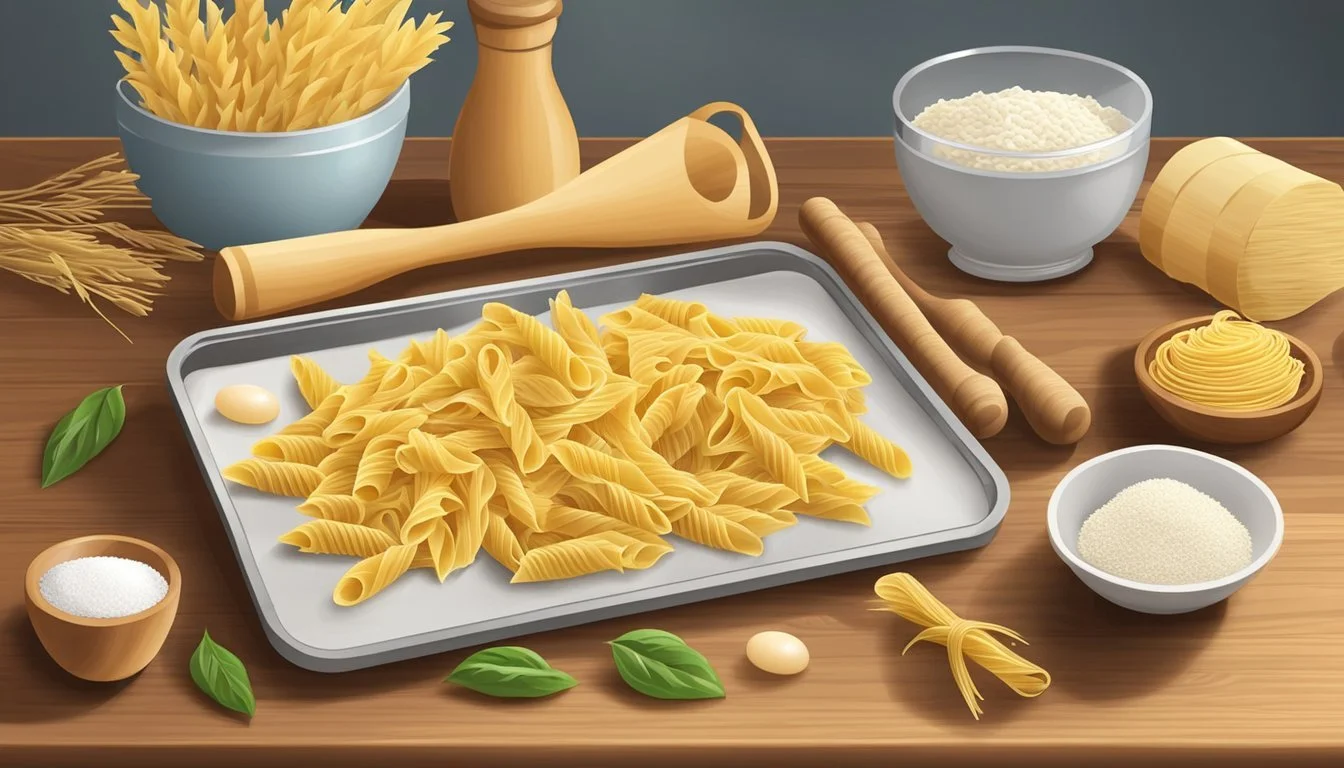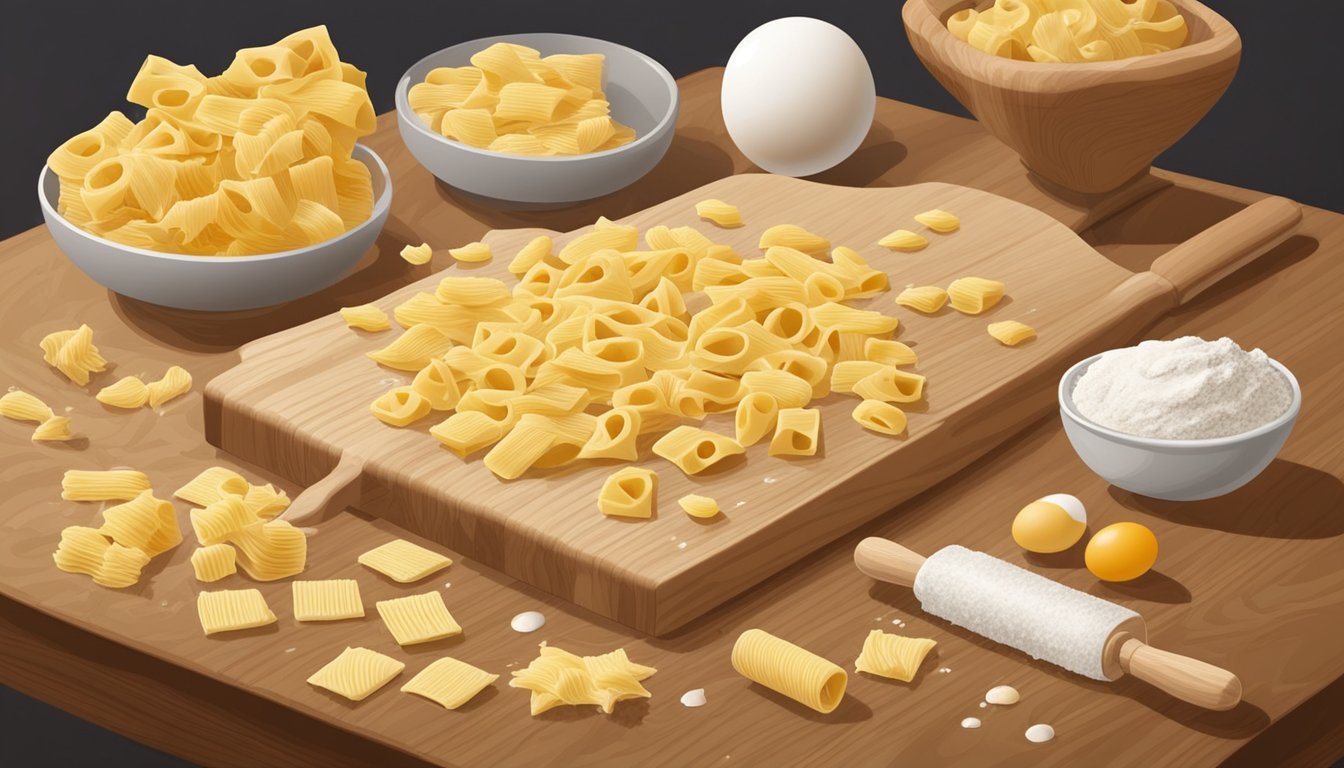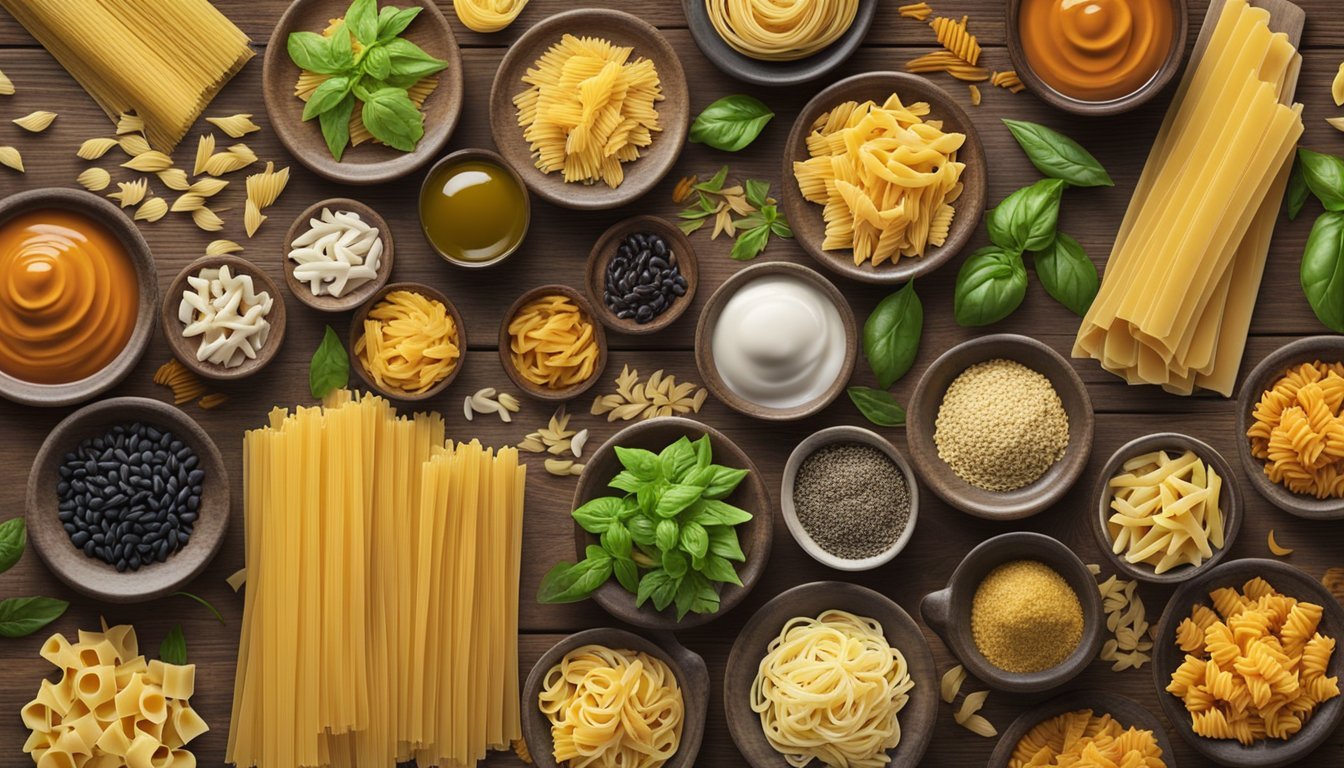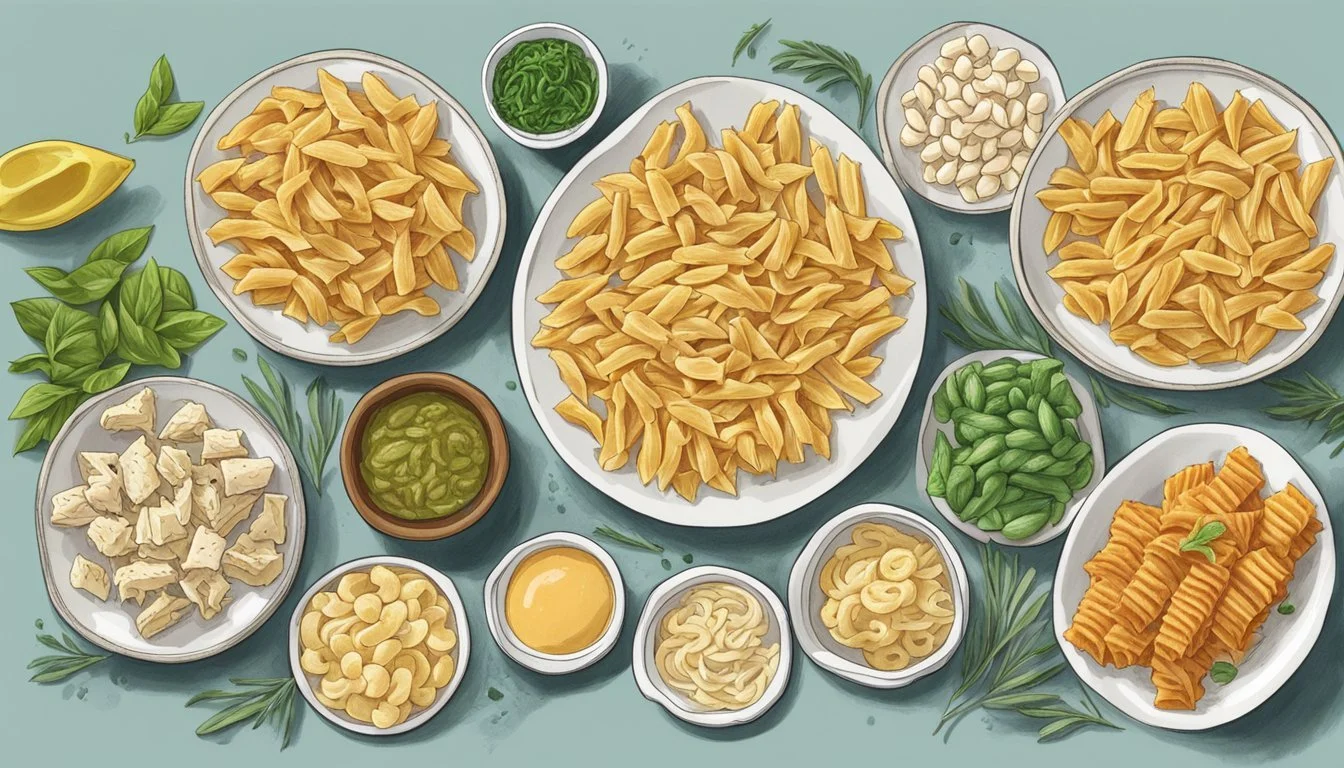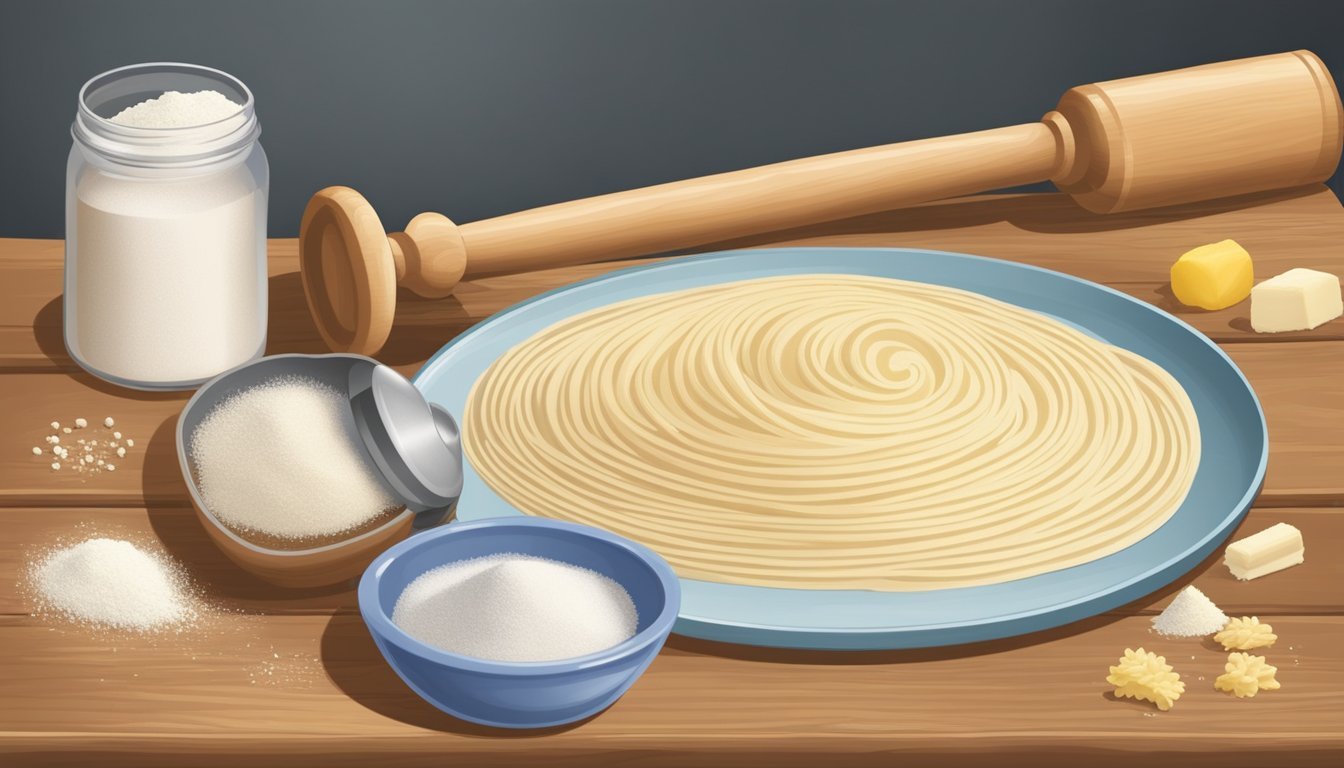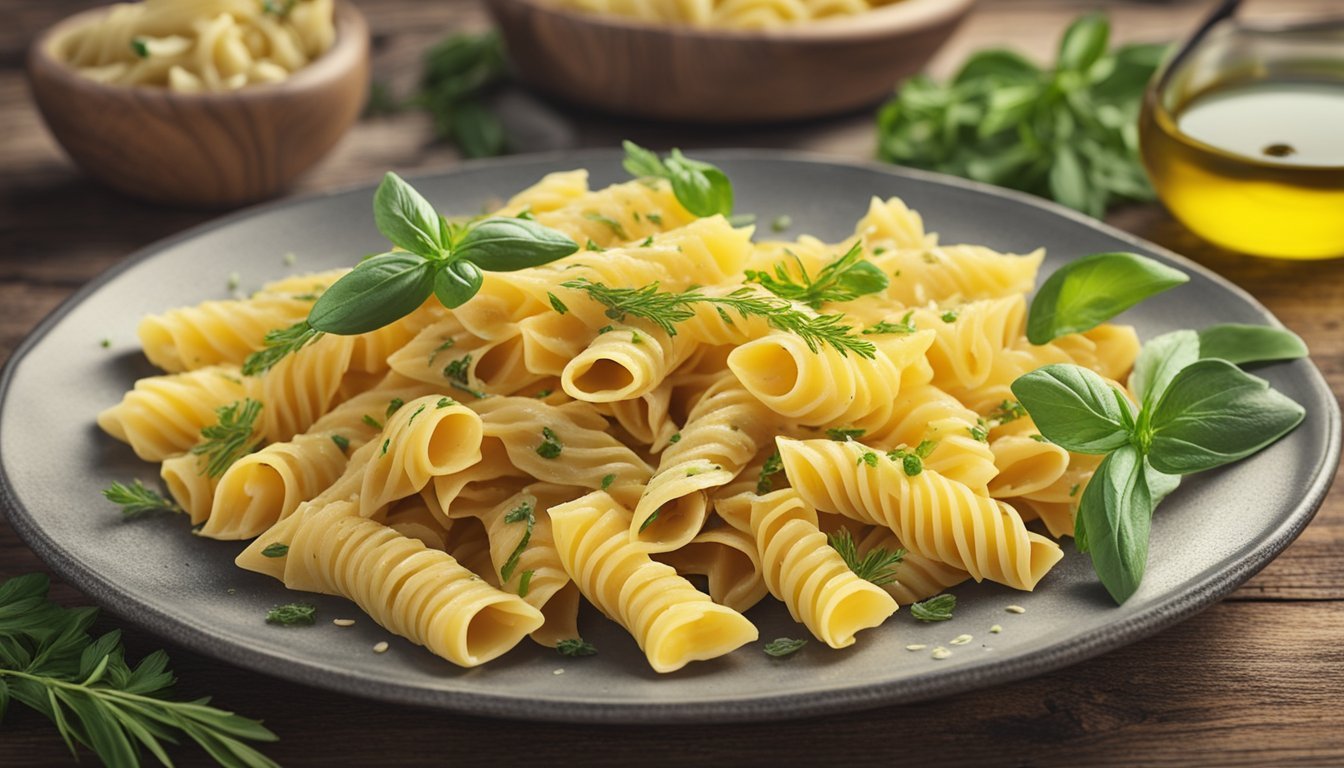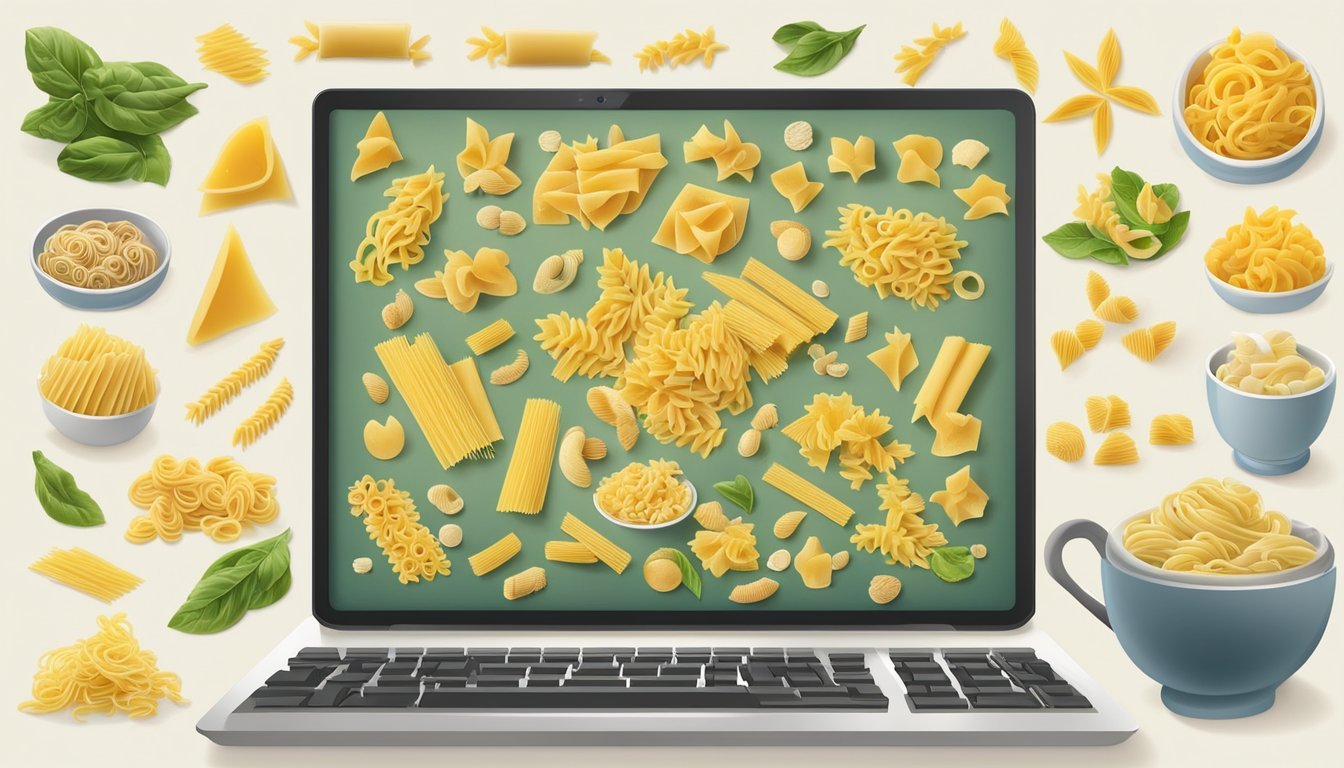Garganelli Pasta Substitutes
Top Alternatives for Your Italian Dishes
Garganelli pasta (What wine goes well with pasta?) is a traditional Italian pasta known for its distinctive quill shape and ridged texture, which allows sauces to adhere well, providing a robust flavor in each bite. The process of making garganelli pasta involves rolling squares of egg pasta dough into tubes, traditionally over a wooden implement called a pettine. The resulting pasta is both visually appealing and delightful in texture, making it a favorite for various pasta dishes.
However, not everyone has the time or resources to make homemade garganelli or may not find it readily available in stores. In such cases, pasta lovers might seek alternatives that offer a similar culinary experience. Suitable substitutes for garganelli pasta should ideally have ridges or grooves to catch sauce effectively, and a comparable size to ensure consistent cooking times and flavor distribution.
When selecting a substitute for garganelli, one should consider pasta shapes like penne or casarecce, which are readily accessible and share structural features that mimic the sauce-holding capability of garganelli. These alternatives can offer a satisfying texture and interplay with sauces, making them excellent options for dishes typically reserved for garganelli, ensuring that the pasta elements of a meal deliver as intended.
Understanding Garganelli Pasta
Garganelli pasta is a distinctive type of fresh pasta with historical roots in the Emilia-Romagna region of Italy. It is renowned for its unique shape and texture, which allow sauces to adhere superbly.
Origins and History
Garganelli pasta originated in the Romagna and Emilia sub-regions of Emilia-Romagna. It is typically handmade and has been a traditional staple in Italian cuisine. The creation of garganelli pasta is often associated with home cooks who fashioned the pasta using a garganelli board and a wooden stick, known as a pettine or traditional garganelli tool. These tools give garganelli its characteristic ridges, which set it apart from similar pastas like penne.
Characteristics of Garganelli
The pasta dough for garganelli is made from a mixture of eggs and flour, resulting in a fresh pasta that when cooked, offers an al dente texture. After the dough is rolled out, it is cut into squares and then rolled around a wooden stick to create a tubular shape. The ridged surface of the pasta is not just decorative; it serves a functional purpose by helping sauces cling to the pasta. Unlike penne, which is extruded and has a smooth surface, garganelli's ridges are formed manually using the pettine. This textural distinction is a key characteristic of authentic garganelli and contributes to its popularity among pasta aficionados.
Pasta Substitutes for Garganelli
When looking for a suitable replacement for Garganelli pasta in a dish, one should consider the shape and texture of potential substitutes. Ingredients and sauces originally intended for Garganelli can often be paired effectively with similar pasta types, such as penne, gnocchi, and rigatoni.
Using Penne as a Substitute
Penne pasta, with its tube-like shape and ridges, resembles Garganelli's distinctive ridges and rolled shape. Penne rigate, specifically, has a similar texture that holds onto sauces well, making it an ideal dry pasta alternative in most recipes requiring Garganelli.
The Viability of Gnocchi
Gnocchi, little dumplings traditionally made from potato, offer a unique substitute. While they differ in shape, their soft, pillowy texture contrasts with the firm bite of fresh Garganelli pasta. For dishes requiring a more robust potato pasta, gnocchi can be made using a gnocchi board to add ridges, allowing them to capture sauces similarly to Garganelli.
Rigatoni: A Suitable Alternative
Rigatoni may be larger in size, but it is a fitting alternative to Garganelli. Its ridged exterior and substantial diameter make it excellent for holding hearty sauces. Rigatoni complements ingredients that are typically paired with fresh or dry Garganelli pasta, ensuring flavors are delivered effectively.
Homemade Garganelli
Homemade Garganelli reflects a cherished Italian pasta tradition, made distinctive by its tube shape and ridged texture. This rhythmic process involves creating a dough from scratch, shaping the pasta with specialized tools, and cooking it to reach an al dente finish. Ideal for absorbing sauces, homemade Garganelli offers a rewarding culinary experience with a prep time that varies depending on the technique used.
Creating Pasta Dough from Scratch
To begin, one must combine the fundamental ingredients for any pasta dough: high-quality flour, eggs, and a pinch of salt. Traditionally, a blend of all-purpose flour and semolina is sifted onto a clean work surface to create a stable foundation for the dough formation. A well is made in the center into which the slightly beaten eggs and a sprinkle of salt are added.
Ingredients:
All-purpose flour
Semolina
Eggs
Salt
One can integrate the ingredients by using a fork or dough scraper until achieving a crumbly mixture. Kneading by hand is essential to form a cohesive dough ball. A little olive oil might be added to enrich the dough and to aid in elasticity. Once the dough is smooth and pliable, it should be wrapped in plastic wrap and allowed to rest, typically for about 30 minutes.
Assembling the Garganelli
The rested dough is rolled out with a rolling pin or fed through a pasta machine to achieve the desired thickness. The pasta sheets are then cut into squares. To shape a Garganelli, each square is rolled diagonally around a "pettine per la pasta" (pasta comb) or a small rod, like a dowel. A pasta wheel assists in cutting a precise edge.
Tools:
Rolling pin or pasta machine
Knife or pasta wheel
Pasta comb (Pettine per la pasta) or dowel
The edges are pressed to seal, and the ridged effect is achieved as the pasta wraps around the pettine. The resulting maccheroni al pettine is then set aside on parchment paper, possibly left to dry slightly if preferred, to help hold its shape when cooked.
Cooking Perfect Garganelli
Setting a pot of salted boiling water to a high heat prepares the stage for cooking the Garganelli. The cook time is crucial and varies depending on the pasta's thickness; thinner pasta may need only 2-3 minutes, while thicker pasta might require 7-8 minutes.
Cooking Steps:
Bring approximately 6 quarts of salted water to a boil.
Place the Garganelli in the boiling water and monitor closely.
Taste test for an al dente texture, with a firm bite.
After draining, a bit of the pasta water can be reserved to emulsify with sauces, which enhances the final dish's flavor and texture. Homemade Garganelli, now perfectly tender yet firm, is ready to be paired with one’s sauce of choice and enjoyed for its homemade, artisanal quality.
Pasta Sauces and Flavorings
In the quest for the perfect accompaniment to Garganelli pasta, the sauces play a pivotal role. They bring out the pasta's textured grooves and enhance its flavor profile. Here are several sauce options that pair exceptionally well with Garganelli pasta.
Classic Bolognese Sauce
A Classic Bolognese Sauce is a staple in Italian cuisine, known for its rich, meaty flavor that clings to every ridge of Garganelli pasta. Traditional ingredients include:
Ground meat (usually beef or a combination with pork)
Onions and garlic, sautéed in olive oil
Crushed tomato and herbs such as basil and fresh parsley
Grated Parmesan or Parmigiano Reggiano to finish This sauce often simmers for several hours, allowing the flavors to deepen and meld.
Cream-Based Sauces
Cream-Based Sauces add a decadent touch to Garganelli pasta. Their key components are:
Ingredient Role in Sauce Heavy cream Provides rich, creamy base Cheese Adds flavor and texture Garlic and herbs Infuse the sauce with aromatics Nutmeg A pinch enhances the creaminess Black pepper For a warm, slightly spicy finish
These sauces can range from a simple Alfredo to more complex variants incorporating cheese or vegetables for added fiber.
Pesto and Vegetable Sauces
Pesto and Vegetable Sauces offer a lighter, yet equally flavorful option. They typically contain:
Basil, pine nuts, and Parmesan cheese, blended with olive oil for the classic pesto
A mixture of pureed or finely chopped vegetables like bell peppers or sun-dried tomatoes
Seasoned with garlic, salt, and black pepper for a simple, yet robust flavor
These sauces coat the Garganelli pasta well, filling its grooves with vibrant colors and flavors.
Pairing Proteins with Pasta
Innovative gastronomy allows for an array of protein-rich accompaniments for Garganelli pasta, turning it into a nutritiously balanced meal that caters to various dietary preferences.
Seafood Variations
One may complement Garganelli pasta with seafood options high in protein such as tuna or shrimp. For a simple yet refined enhancement, they can incorporate tuna—a lean protein choice—directly into the sauce or serve it as a substantial topping.
Grilled Tuna:
Season with herbs and olive oil
Grill to preferred doneness
Slice and place atop pasta
Shrimp:
Sauté with garlic until pink
Toss lightly with pasta and fresh parsley
Adding Poultry and Red Meats
Both chicken and beef offer succulent textures and are excellent sources of protein, capable of enriching Garganelli pasta dishes.
Chicken:
Cooked as tender strips or cubes
Seasoned with herbs and integrated into the pasta
Beef:
Ground beef for bolognese-style sauces
Thin slices of steak can elevate the dish significantly
Including Vegetarian Proteins
Alternative paths to protein in pasta include tofu, beans, and legumes. They are substantial vegetarian options that add unique textures and are packed with proteins.
Tofu:
Marinated and seared for enhanced flavor
Diced and folded into pasta sauces
Beans/Legumes:
Lentils or chickpeas can be simmered within the sauce
Cannellini beans present a creamy texture and can serve as a base for protein-rich pasta salads
Cooking Techniques and Tips
Crafting the perfect Garganelli pasta involves mastery over technique and the use of appropriate tools to achieve the desired texture and flavor. This section covers essential cooking tips and the tools necessary for making and serving pasta to perfection.
Preparing Pasta Al Dente
To prepare Garganelli al dente, one must monitor the cooking time meticulously. Al dente—meaning "to the tooth" in Italian—refers to pasta that is cooked to be firm but not hard. Starting with a large pot of salted boiling water, cook the Garganelli for approximately 6-8 minutes. To achieve consistency in doneness, stir occasionally with a wooden spoon to prevent sticking. Test a piece before the end of the cooking time: the pasta should offer a slight resistance when bitten but should not be hard in the center.
Tools for Making and Serving Pasta
Several tools are essential for making Garganelli pasta:
Pasta machine: This simple tool is vital for rolling out the dough evenly. Begin with the widest setting, folding and rerolling the dough several times until it becomes smooth.
Knife: A knife or a dough cutter can help cut the sheets of pasta dough into squares prior to shaping them on the Garganelli board.
Garganelli board or pasta comb: These wooden boards with ridges are traditional tools used to give Garganelli its distinctive ridges.
Wooden spoon and slotted spoon: Utilize a wooden spoon for stirring pasta while cooking and a slotted spoon for removing the pasta from the boiling water without carrying excess water over.
Keep the dough covered while working in batches to prevent it from drying out. When serving, consider a simple drizzle of olive oil and a grate of Parmesan to highlight the Garganelli's texture and flavor, or pair it with the sauce of your choice.
Dietary Considerations
When looking for Garganelli pasta substitutes due to dietary restrictions, cooks commonly consider gluten-free options and alternatives that are both low in carbohydrates and high in dietary fiber. These substitutes aim to cater to individuals with specific health requirements, including those with gluten intolerance or allergies, and those following low-carb diets.
Gluten-Free Pasta Options
For those with celiac disease or non-celiac gluten sensitivity, gluten-free pasta options are essential. Gluten, a protein found in wheat, causes adverse reactions in these individuals.
Brown Rice Pasta: A suitable substitute made from brown rice, it retains a texture close to traditional pasta while being gluten-free.
Quinoa Fusilli: Combines the benefits of quinoa and brown rice, offering a gluten-free alternative that is high in protein and has a texture comparable to wheat pasta.
Retail Suggestion: Look for brands like Trader Joe's, which offer gluten-free brown rice and quinoa fusilli pasta.
Low-Carb and High-Fiber Alternatives
Those adhering to low-carb diets or seeking high-fiber options can benefit from pasta alternatives that help manage weight and promote digestive health.
Zucchini Noodles: They are not only low in carbohydrates but also high in fiber, making them a refreshing alternative to traditional pasta.
Soba Noodles: Made from buckwheat, soba noodles offer a higher fiber content than regular pasta, supporting those on reduced-carbohydrate diets.
Note: Soba noodles contain gluten, so they are not suitable for gluten-free diets.
Serving and Presentation
When serving Garganelli pasta, the right choice in dishware and garnishings can significantly enhance the dining experience by complementing the dish's visual appeal and flavors.
Choosing the Right Dishware
Selecting appropriate dishware is crucial for serving Garganelli pasta. Serving size is a key consideration; a standard portion of pasta is approximately 2 ounces dry, which translates to about 1 cup cooked. Serving bowls or plates should have enough depth and breadth to accommodate the pasta without overcrowding, allowing the shape and texture of Garganelli to stand out. For formal settings, white porcelain plate types provide a classic backdrop that makes the colors of the pasta and its sauce pop. In contrast, earthenware or stoneware with subtle patterns can add a rustic charm to casual dining situations.
Garnishing for Aesthetic Appeal
Garnishing the pasta with fresh herbs not only adds a burst of flavor but also elevates the presentation. Lightly sprinkle chopped parsley or other herbs over the Garganelli just before serving, ensuring they are fresh and evenly distributed. The addition of color and texture through garnishes should complement, not overpower, the dish. Consider a drizzle of high-quality olive oil for shine and a few shavings of Parmesan cheese for a touch of elegance. Presentation matters greatly; arrange the garnishes with intention to create a visually appealing dish that entices the senses before the first bite is taken.
Additional Pasta Recipes
In exploring the rich and diverse world of pasta, Garganelli offers a canvas for a captivating variety of recipes and regional dishes.
Variations of Garganelli Recipes
Garganelli, a quill-shaped egg pasta typical of the Emilia-Romagna region, pairs wonderfully with an array of sauces and ingredients. A traditional recipe might include Pumpkin and Sage Sauce, highlighting the sweet and earthy tones perfect for autumnal feasts. For a simple yet flavorful twist, one can add garlic or a pinch of chili flakes to enhance the sage's aroma.
When it comes to Carbonara, using garganelli instead of the usual spaghetti introduces a satisfying texture that holds the creamy, peppery sauce well. Garganelli also serves as an ideal base for Paglia e Fieno (straw and hay), a dish combining green and yellow pasta with a prosciutto and cream sauce, creating a visually appealing and delicious meal.
Exploring Regional Dishes
Delving into regional Italian cuisine presents a vast array of garganelli pasta recipes. For instance, Garganelli alla Zingara features a rich and hearty meat sauce. The recipe marries the robust flavors of sausage, rosemary, and tomato, often with a hint of spice, exhibiting the depth of Italian culinary traditions.
In contrast, recipes from the Emilia-Romagna region stay true to their roots with a focus on fresh, high-quality ingredients. One may encounter garganelli paired with a mushroom ragù, where the pasta's ridges capture the earthy sauce, or tossed in a light yet luscious butter and sage sauce, showcasing the simplicity of traditional recipes.
Online Community and Resources
For enthusiasts looking to refine their garganelli pasta substitutes, the internet hosts a wealth of resources. They can find detailed discussions and varied opinions in specialized pasta making forums, while social media groups offer a more interactive community experience, rich in visual content and peer support.
Pasta Making Forums
Online forums are a treasure trove for pasta aficionados. The Fresh Loaf and ChefTalk are places where beginners and skilled cooks alike discuss techniques and exchange tips. Topics range from how to find the best flour for pasta making to how to roll the perfect garganelli shape. These forums are also excellent resources for finding substitutes when traditional ingredients are unavailable.
Popular Forum Topics:
Substituting pasta ingredients and equipment
Recipes for different pasta sauces
User experiences with various pasta brands and types
Social Media Groups
Various social platforms such as Facebook have dedicated groups for pasta lovers. Groups like Homemade Pasta Enthusiasts are not only platforms for sharing triumphs and troubles in pasta making but also hotspots for innovating with new ingredients. Foodies celebrate their homemade garganelli with photos and videos, and often, cooking blogs will share their latest garganelli recipes here.
Facebook Groups for Pasta Lovers:
Homemade Pasta Makers – A group for frank discussions and troubleshooting.
Pasta Recipes & Tips – Members share family recipes and modern twists on classics.


